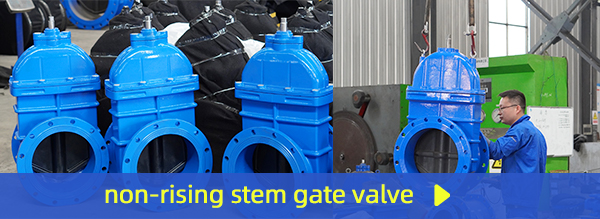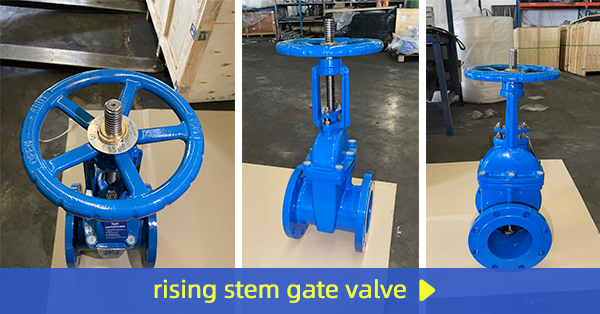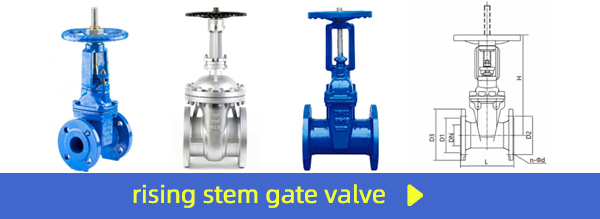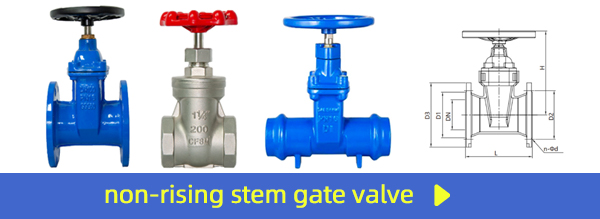- Gate valve
-
- DN1000 Extension stem double flange soft seal gate valveDIN F4 resilient seated gate valveDN450-1200 Resilient Seated Gate ValveDIN F5 resilient seated gate valveSocket connection soft seal gate valveUnderground cap soft seal gate valveBS5163 rising stem soft seal gate valveHard seal gate valveAPI slab Gate ValveStainless steel flange gate valveWafer knife gate valvePneumatic gate valveSoft seal gate valveExtension stem gate valveUL/FM fire protection groove ends gate valveRising stem forged steel gate valvecarbon steel gate valveStainless steel threaded gate valveDIN soft seal gate valveANSI soft sealing gate valve 200PSICast iron gate valveBS resilient seated gate valve
- Butterfly valve
-
- DN900 pneumatic triple eccentric hard seal butterfly valveD643H Triple Eccentric Butterfly ValveD343H Hard seal butterfly valveMulti standard EPDM seated butterfly valveSingle flange butterfly valveDN2000 Double eccentric butterfly valveFlange butterfly valveLug butterfly valveWafer butterfly valve with handleWorm gear operated butterfly valveWafer lined fluorine butterfly valveStainless steel wafer butterfly valveStainless steel flanged butterfly valveThree eccentric flange butterfly valvePneumatic flanged butterfly valvePneumatic wafer butterfly valveTriple eccentric butterfly valve wafer typeWafer butterfly valve ULC approvedInflatable seat butterfly valveHigh performance butterfly valveGrooved end butterfly valveElectric soft seal butterfly valveFlange fluorine lined butterfly valveHandle aluminum butterfly valveWorm Gear Aluminum Butterfly ValveFull PTFE lined butterfly valve wafer typeOne stem no-pin wafer butterfly valveMulti standard aluminum stem butterfly valveStainless Steel wafer Butterfly ValveAluminium handle operated lug butterfly valveLever Operated Flange Butterfly ValveButterfly valve stemButterfly valve discButterfly valve seat
- Ball valve
-
- DN1400 top-mounted eccentric semi-ball valveFlanged three-way ball valveFully welded ball valveNatural gas ball valveHigh platform flange ball valve1 PC ball valveFixed ball valvePTFE seat flanged ball valveMetal seat ball valveAPI 6D ball valve3 Piece ball valveFull Bore 3 way ball valve L-Port3 Way T-Port ball valve2PC Ball valve female thread stainless steel
- Globe Valve
-
- API Carbon Steel Globe ValveBellows Globe ValveStainless steel flange globe valveStainless steel thread S type globe valveStainless steel thread B type globe valveCast Steel Globe ValvePiston Globe ValveWCB Carbon Steel Globe Check Valveelectric motorized control stainless steel SS316 globe valveBrass Globe ValveCryogenic Globe valveHT200 Globe ValveThreaded Stainless Steel Globe ValveGG25 Globe ValveANSI API Cast Steel And Stainless Steel Globe valve
- Check valve
-
- Rubber seal check valveDN800 Slow closing check valveDN800 Rubber Disc Check ValveButterfly Buffering Check Valvecheck valve with counter weightSilent Check ValveWCB Swing check valveSwing Check ValveSingle Chip Check Valve H74WStainless Steel Wafer Check ValveSwing Start Check ValveFoot check valveAPI Swing Check ValveDIN Flange check valveSingle plate check valveLifting Check ValveBottom ValveHammer Diminish Noises Check ValveWafer Check ValveWafer dual plate check valve
- Control valve
-
- Static Balancing ValveCage Guided Sleeve Globe Control ValveDN1000 Piston Flow Regulating ValveDN1600 Electric Actuator Flow Regulating ValvePneumatic Flanged Butterfly ValvePneumatic Wafer Butterfly ValveAngle Seat ValvePneumatic gate valveElectric three-way control valveElectric sleeve control valve
- Water Meter
-
- Vertical Type Water MetersStainless steel threaded water meterPiston water meterPlastic water meterMore flow rotor dry water meterspiral vane flange water meterCI wotlman water meter with pulse outputLXCLG(R) Vertical removable element woltman cold (hot) water meterSingle flow rotor dry water meterPrepaid Token Water MeterElectromagnetic flowmeterRotary Piston Liquid Sealed Water MeterRotary Piston Liquid Sealed Water Meter
- Air valve
-
- Double ball exhaust valveDoubleair Air Valve SaudiDoubleair Air Valve Southeast AsiaDoubleair Air Valve South AmericaDouble Air ValveThreaded Air ValveSingle Air ValveTriple Functions Air ValveAutomatic Air Release ValveAutomatic release valveAutomatic exhaust valveComposite Exhaust Air ValveBrass exhaust valveDouble Ball Air Valve
- Pipe Repair & Coupling
-
- Flexible Multi-Function Pipe Coupling ZFJ-SSS Semi-Circle Pipe Repair Clamp SJW-HDuctile Iron Band Repair ClampStainless Steel Band Repair ClampDouble-Section Pipe Repair CouplingFolding Type Pipe RepairSingle-Section Multi-Function Pipe Coupling MF-SGear-Ring Type Multi-Function Pipe Coupling GR-SZBW Damping Corrugated Hose
- Dismantling Joint
-
- VSSJAFC(CC2F) Detachable Flange Transmission JointVSSJA-2(B2F) Double Flange Limited Expansion JointVSSJA-1(BF) Single Flange Limited Expansion JointVSSJA(AF) Flange Loose Expansion JointJGD-B Threaded Rubber JointZBW Damping Corrugated HoseKXT-S Flexible Dual-Spherical Rubber JointKXT Rubber Soft JointFlange Adaptor
Gate valves with rising vs non-rising stem design
Classification of gate valves:
Gate valves have a variety of different structural forms, the main difference is the type of structure of the sealing element used is different. According to the structure of the sealing element, the gate valve is often divided into several different types.
For example, according to the type of structure classification, there are parallel gate valves and wedge gate valves; the structure of the stem can also be divided into open stem (lifting rod) gate valves and concealed stem (rotary rod) gate valves.
1)Classification by stem
①The stem is the operating part of the gate valve, and its role is to transfer the opening and closing force to the opening and closing parts. According to the classification of stem structure type, there are two kinds of open stem gate valves and concealed stem gate valves.
②By rotating the stem nut, the stem drives the gate plate to rise and fall simultaneously to open and close the valve, so it is easy to identify the opening and closing status of the valve and avoid misoperation. Since the stem nut is outside the body cavity, it is conducive to lubrication, and the opening and closing status is obvious and intuitive, so it is widely used. However, in harsh environments, the exposed threads of the valve stem are susceptible to damage and corrosion, even affecting operation. Its disadvantage is that the height of the valve after opening is large, usually on the basis of the original height of the valve to add a stroke, thus requiring a large operating space.
③Concealed stem gate valve stem nut is placed inside the valve body, often fixed on the gate, through the rotation of the stem to make the stem nut drive the gate to do lifting movement to complete opening and closing. Because the trapezoidal thread for transmission is located inside the valve body, although not affected by the external environment, but vulnerable to media corrosion and can not be lubricated, the degree of opening can not be directly observed, need to set up another indication device. But its stem does not do lifting movement, and the required operating space is small, so it is suitable for the location of limited pipeline dense occasions, such as ships, underground pipelines, etc.
2) Stem structure
Gate valve stem structure mainly has three different forms: lower thread lift stem (ISRS), non-lift stem (dark stem NRS), and upper thread with bracket (open stem OS&Y).
The lower threaded lift stem is the most commonly used stem structure for copper alloy-type valves today. Since the stem threads are exposed to the medium, there is a possibility of corrosion, which can lead to the failure of the stem and the gate. Therefore, this structure is generally not suitable for critical industrial use valves.
The non-lifting stem is a special type used when the vertical space above the handwheel is limited because the stem does not need to be raised when the valve is opened. Today, most valves made of cast iron or copper alloy use this type of stem construction. Steel non-lifting stem valves are used when operating space is limited (e.g., underground operation).
The threaded upper stem with bracket is mostly used in industry. Especially in corrosive conditions, because the stem threads are basically not in contact with the medium, they are also away from potential corrosion hazards. Unlike the other two types of stem construction, the handwheel is connected to the stem nut at the top of the valve bracket rather than directly to the stem itself, so the handwheel does not rise with the valve when it is opened.











